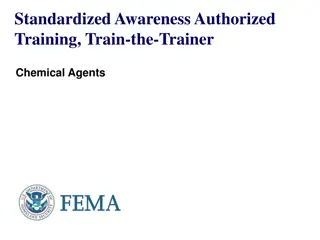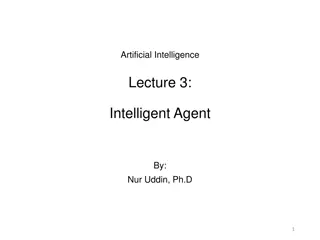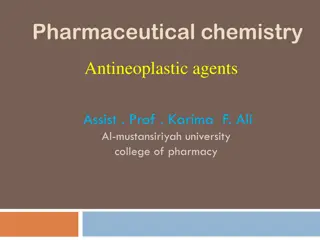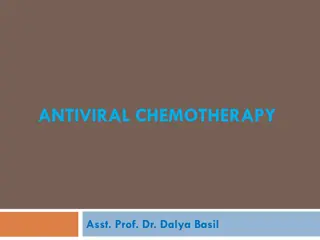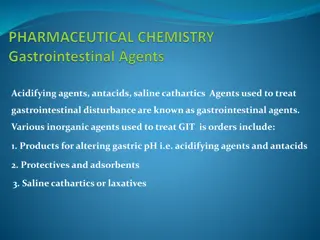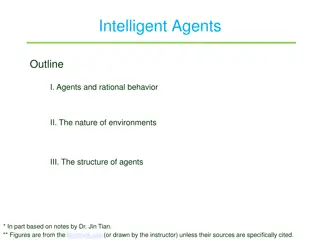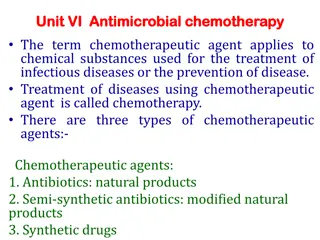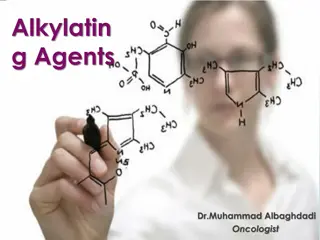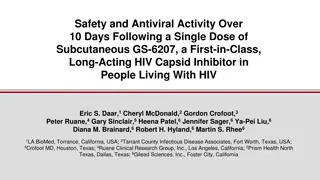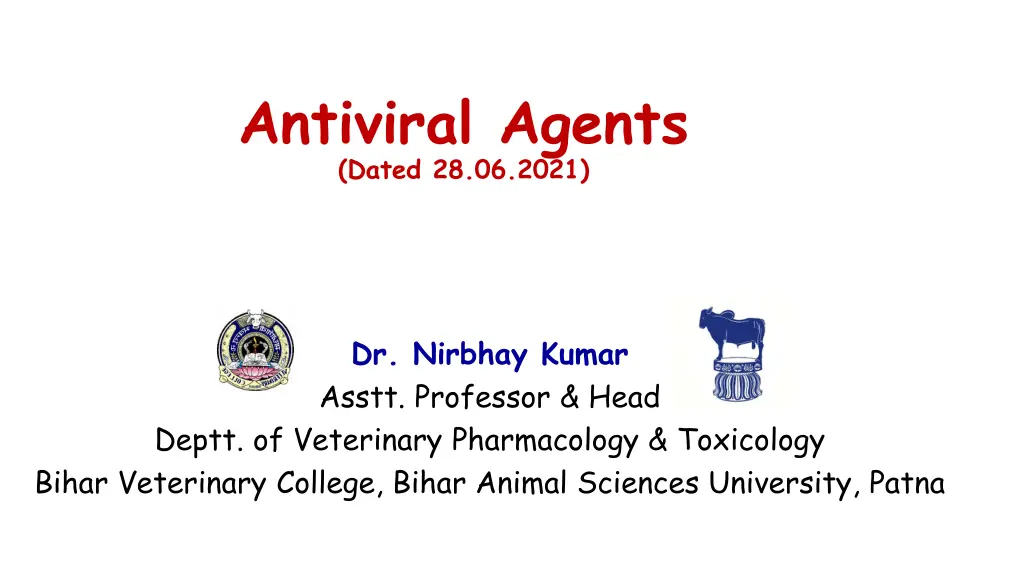
Understanding the Classification of Antiviral Drugs
Explore the classification of antiviral drugs, including inhibitors of viral nucleic acid synthesis and those preventing virus assembly in host cells. Learn about the challenges of viral chemotherapy and the importance of maintaining a strong immune system against viral infections.
Download Presentation

Please find below an Image/Link to download the presentation.
The content on the website is provided AS IS for your information and personal use only. It may not be sold, licensed, or shared on other websites without obtaining consent from the author. If you encounter any issues during the download, it is possible that the publisher has removed the file from their server.
You are allowed to download the files provided on this website for personal or commercial use, subject to the condition that they are used lawfully. All files are the property of their respective owners.
The content on the website is provided AS IS for your information and personal use only. It may not be sold, licensed, or shared on other websites without obtaining consent from the author.
E N D
Presentation Transcript
Antiviral Agents (Dated 28.06.2021) Dr. Nirbhay Kumar Asstt. Professor & Head Deptt. of Veterinary Pharmacology & Toxicology Bihar Veterinary College, Bihar Animal Sciences University, Patna
Viral Chemotherapy Difficult: It is difficult to inhibit viral functions without also inhibiting those of the host. Toxicity in the mammalian cell (poor selective toxicity). All of the presently available virostatic. Thus an intact immune system is required to maintain the suppression of many viral infections. It would appear that the clinician s best defense against viral disease remains preventing infection (vaccination) rather than attempting to specifically treat an already existing viral infection. antiviral drugs are
Structure of a Virus (Virion)
Replicative cycle of a Virus 1. Attachment : Attachment to the host cell membrane, often to a specific protein receptor. 2. Penetration : Penetration of the host cell membrane. 3. Uncoating : Uncoating of protein coat and release the viral genetic material into the host cell cytoplasm. 4. Transcription : A mRNA strand is made from the viral genetic material. 5. Translation : Viral mRNA attaches to host ribosomes, and nucleic acids are translated into viral proteins. 6. Replication : Duplicate strands of genetic material are produced from the original viral template. 7. Assembly : Viral proteins/ protein coats and newly formed viral genetic material combine to form mature virus particles. 8. Release : New virus particles either bud from the host cell membrane or are released as the host cell bursts & infect other cells.
Replicative cycle 1. Attachment/ Binding 2. Penetration/ Entry 3. Uncoating 4-6. Transcription 7. Translation 8. Replication 9. Assembly 10. Release
Replicative cycles of DNA (A) and RNA (B) viruses Sites of action of antiviral agents also are shown. Key: mRNA = messenger RNA; cDNA = complementary DNA; vRNA = viral RNA; DNAp = DNA polymerase; RNAp = RNA polymerase; cRNA = complementary RNA. An X on top of an arrow indicates a block to virus growth.
Classification of Antiviral Drugs
Classification of Antiviral Drugs 1.Inhibitors of Viral Nucleic Acid Synthesis: (a) Interfering with Trifluridine. (b)Inhibitors of DNA synthesis: Acyclovir, Ganciclovir, Cytarabine, Vidarabine, Zidovudine, Ribavirin. 1.Preventing virus in host s cell (Inhibition of Assembly of the Virus): Amantadine, Rimantadine. 2.Increasing the host s resistance: Interferons, Gamma- globulins. Transcription: Idoxuridine,
Antiherpesvirus Antiherpesvirus Agents: Nucleoside Agents: Nucleoside Analogs (Acyclovir, Valacyclovir, Penciclovir, Famciclovir, Ganciclovir,Idoxuridine, Cytarabine, Ribavirin, Zidovudine) Analogs ACYCLOVIR: Acyclovir is prototypic nucleoside analog of purine (deoxyguanosine). Acyclovir acts selectively against herpesviruses. Valacyclovir is a prodrug that is itself inactive but is rapidly metabolized to its active form, acyclovir, after oral absorption. Mechanism of action: Acyclovir is converted to its active form acyclovir triphosphate in infected cells by the viral thymidine kinase with 200 times greater efficiency than mammalian enzyme. Its inhibits viral DNA polymerase by competing with deoxyguanosine triphosphate. Clinical uses: Herpes virus infections in in cats, horses and birds are treated with acyclovir. Adverse effects: Nephrotoxicity and bone marrow suppression at higher doses.
Antiherpesvirus Antiherpesvirus Agents: Nucleoside Agents: Nucleoside Analogs Analogs contd contd PENCICLOVIR & FAMCICLOVIR: Penciclovir is administered topically as a 1% cream for the therapy of herpes labialis. Penciclovir shares a similar mechanism of action as acyclovir. Famciclovir is systemically administered antiviral agent used routinely. GANCICLOVIR: Ganciclovir is also a nucleoside analog but is more potent than acyclovir against herpesviruses including feline & equine herpesvirus and human cytomegalovirus. Ganciclovir is administered systemically as an injectable formulation for intravenous administration or as an oral tablet.
Antiherpesvirus Antiherpesvirus Agents: Nucleoside Agents: Nucleoside Analogs Analogs contd contd IDOXURIDINE: Idoxuridine is thymidine analog that is only active against DNA viruses, primarily herpesvirus and poxvirus. Not used systemically due to toxicity. Used topically only. CYTARABINE & VIDARABINE: Cytarabine (also known as cytosine arabinoside) and vidarabine, are nucleoside analogs of cytosine and adenine, respectively. They have in vitro activity against certain DNA viruses, including herpesviruses, poxviruses, vaccinia, rabies, cytomegalovirus, and probably hepatitis B virus.
Antiherpesvirus Antiherpesvirus Agents: Nucleoside Agents: Nucleoside Analogs Analogs contd contd RIBAVIRIN: Ribavirin is a guanosine analog that inhibits the replication of a wide range of RNA and DNA viruses in vitro. Ribavirin is primarily used in the therapy of selected RNA viruses, including hepatitis C, respiratory syncytial virus, Lassa fever virus, and influenza A and B. ZIDOVUDINE, ADEFOVIR: Zidovudine is a thymidine analog that was key to the early antiviral success against human immunodeficiency virus (HIV). Selectively inhibits viral reverse transcriptase, preventing viral RNA from making a DNA copy of itself. Adefovir is an acyclic purine nucleoside analog that is used in the therapy of hepatitis and herpesviruses.
Foscarnet Foscarnet It is a pyrophosphate analog which exhibits antiviral activity against a variety of DNA and RNA viruses. It inhibits DNA and RNA polymerases as well as reverse transcriptase. The mechanism of foscarnet differs from those of the preceding antiviral agents in that it inhibits these enzymes by binding at the pyrophosphate binding site rather than a base binding site.
Oseltamivir Oseltamivir Oseltamivir phosphate is an ester prodrug that is converted by hepatic esterases to its active metabolite, oseltamivir carboxylate. Oseltamivir is a competitive inhibitor of the enzyme neuraminidase, which influenza viruses use as part of the process of budding of the replicative viral particles from infected cells. Since oseltamivir is an important component in the arsenal against influenza virus infections in people, and resistance to this and other drugs active against influenza can develop rapidly, reserving oseltamivir for human use may be the most prudent approach.
Amantadine, Amantadine, Rimantadine Rimantadine Amantadine hydrochloride and Rimantadine are water-soluble cyclic amines with antiviral activity against a narrow range of RNA viruses, including myxoviruses, paramyxoviruses, togaviruses, and most strains of influenza A virus. Rimantadine has approximately 3 - 4 times greater in vitro activity against influenza A than amantadine. Their antiviral activity involves inhibition of late-stage assembly of the virus. An additional use of amantadine is for treatment of pain syndromes in animals by inhibiting the neurotransmitter N-methyl-d-aspartate (NMDA).
Interferon Interferon Interferons (IFNs) are polypeptide molecules produced by certain mammalian cells in response to viral infections as well as other stimuli. They are potent cytokines that possess antiviral, immunomodulating, and anticancer properties. The antiviral activities of interferons are indirect. They induce a variety of antiviral mechanisms via enhancement of IFN responsive gene promoters within the host cells. An interesting property of IFNs is that once they induce an antiviral state in one cell, that cell can then transfer this antiviral activity to other cells through cell-to-cell contact without requiring additional IFN. Three classes of interferons exist : , and : the last being solely by T-lymphocytes. Interferons interfere with viral multiplication and viral protein synthesis (transcription and translation). Effective against both RNA and DNA viruses. Uses- Hepatitis B and C.

